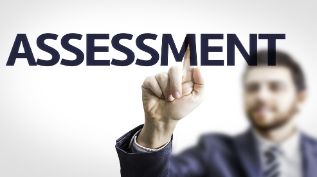Assessing Your Family Foundation’s Work

Foundations are unlike any other type of organization. Unlike businesses, they don’t exist to make a profit. Unlike government, their leaders are not elected, nor do they collect taxes or fees. Unlike nonprofits, they don’t typically engage in the direct service or advocacy work that’s needed to bring change – instead, they support other nonprofits to help achieve the donor’s vision.
While we have clear metrics for gauging success for these other entities — profits and revenues, election results and balanced budgets, money raised and lives affected — foundations operate under a different set of conditions. As a result, foundations face unique challenges when they attempt to assess the impact of their work.
But while your family foundation isn’t ruled by the same market forces that helped your family accumulate its wealth, you will undoubtedly want to find out whether your work is making a difference and whether your organization is operating efficiently. To do that, you will need to collect data and information to help refine your practices and improve your results.
The challenge is figuring out what to measure — and determining how to use the information you collect to improve and grow as a family foundation.
Unfortunately, there is no one set of tools to help foundations assess their impact. It might seem cliche, but foundations are like snowflakes. Just as each family is different, so, too, is each family foundation. Each has its own mission, resources, and approach. And, because of this, it’s virtually impossible to suggest a uniform set of metrics for family foundations that will accurately assess their effectiveness and impact.
As a result, your family will have to develop its own system for assessing its work.
The good news is that the field is becoming increasingly aware of and adept at assessing impact. The National Center for Family Philanthropy, based on the research that gave the field Generations of Giving, has developed the only comprehensive self-assessment process that includes family and board competencies.
Groups like the Center for Effective Philanthropy and Grantmakers for Effective Organizations have made assessment and impact their mission. And discussions and case studies about assessment are front and center at gatherings hosted by NCFP and other philanthropic support organizations.
As you dig into this topic, it’s important to remember that assessment isn’t about nitpicking what’s wrong or finding fault in the work of your staff, board, or grantees. Instead, it’s an opportunity to identify what’s working and to learn lessons that will help you refine your work moving forward. Ideally, you will use these lessons to help improve your approach and results, help your grantees get more traction from their work, and provide insights that can help other foundations become more effective with their own efforts to make change.
Assessment also gives you the freedom to take risks. Many families start foundations because they have a desire to help change the world by using their capital to approach problems in new ways. But to take these new approaches, we need to take chances — and to understand that some of what we try will not work.
Through assessment, we can identify what’s working and what isn’t — and use what we learn, including our mistakes and failures, to adapt and grow.
“Rather than throw out a theory of change or a model for addressing a specific issue when it does not give us the desired results, we should work with grantees to dissect it, understand the flaws, figure out the components of the model that do and don’t work,” writes Katherine Lorenz, and NCFP Fellow and the President of the Cynthia and George Mitchell Foundation. “Get curious about why a program or grant doesn’t work — and then take those lessons forward in creating an improved model.”
This process requires us to think about assessment through two lenses — internal and external.
Your internal lenses focus on how your foundation operates. How effective is your leadership and staff? Is the family providing appropriate guidance? Is your board maximizing its expertise to help your foundation achieve results?
Your external lenses focus on the outcomes of your foundation’s work. Are individual grants achieving their goals? Are you working with organizations that are equipped to make a difference? Is your grantmaking achieving its desired results?
As we’ve noted, there is no one way to set up systems that answer these important questions. But by taking the time to properly assess your family’s work through these lenses, you’ll help keep your philanthropy fresh, rewarding, and impactful.
Editor’s Note: The preceding was excerpted from Splendid Legacy 2: Your Guide to Creating and Re-creating a Family Foundation, which offers more advice on assessment — as well detailed information about how to start and build an effective family foundation.

